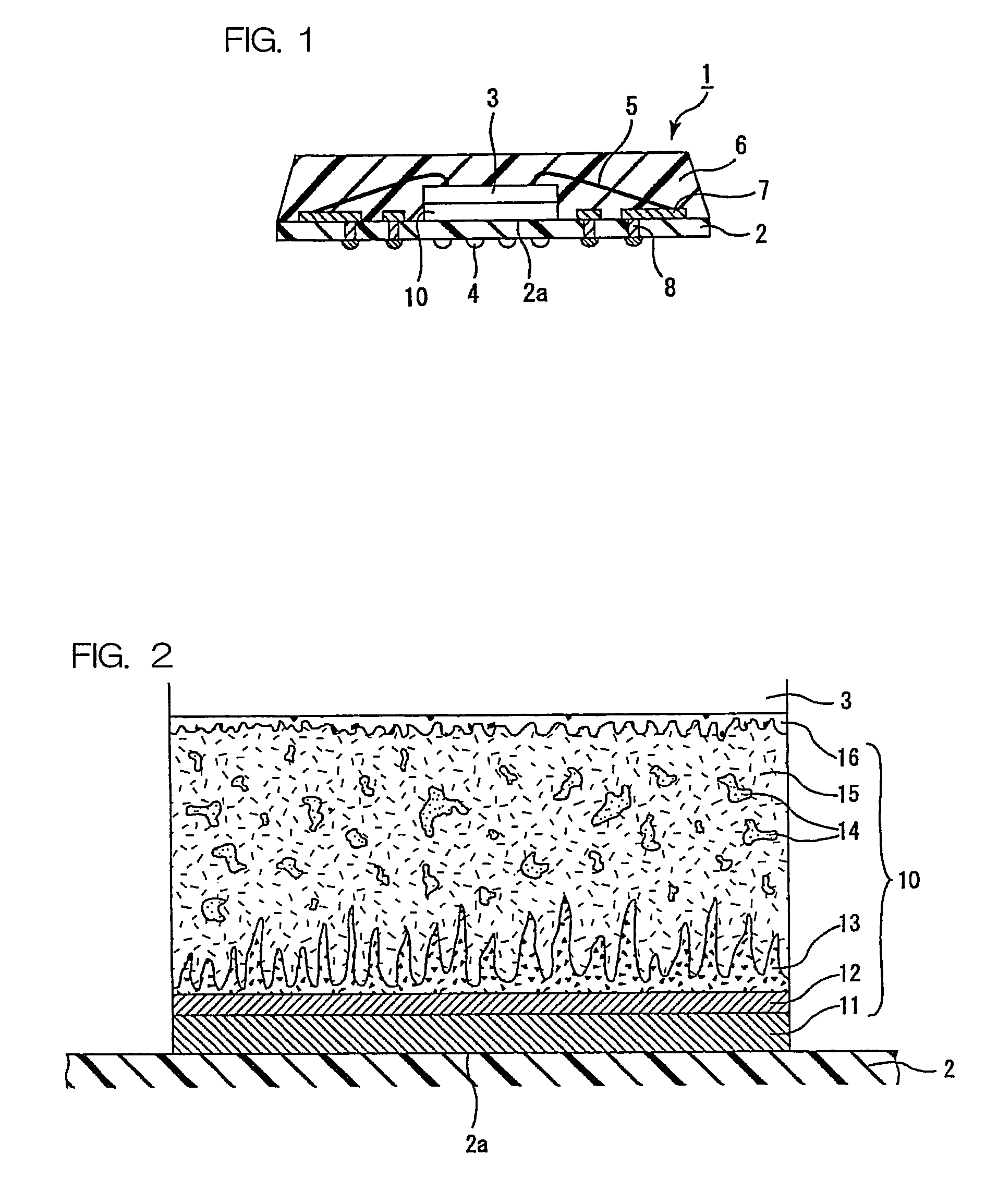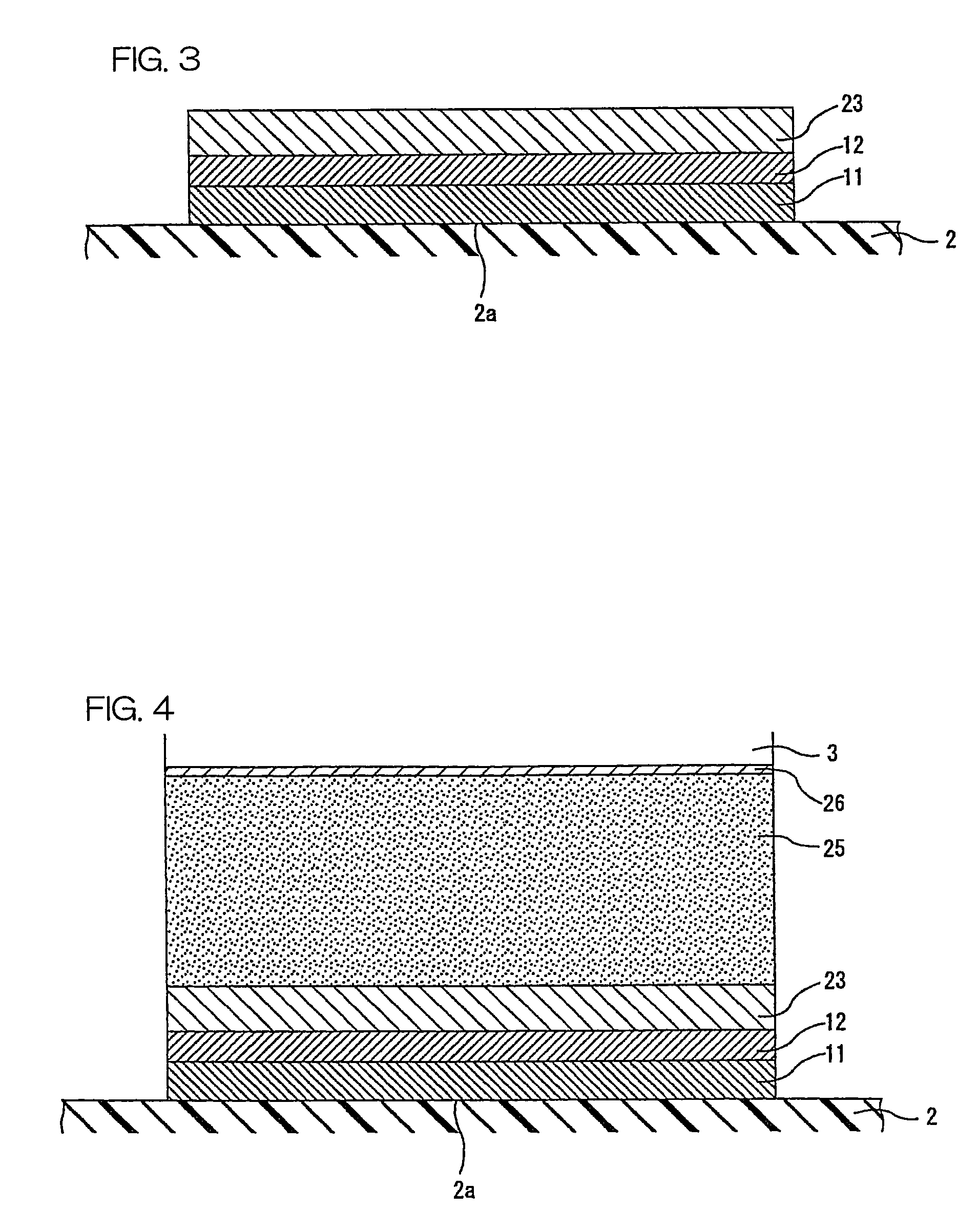Semiconductor device, production method for the same, and substrate
a semiconductor device and production method technology, applied in the direction of manufacturing tools, welding/cutting media/materials, welding apparatus, etc., can solve the problems of reducing the bonding strength between the semiconductor chip and the wiring board, cracking from and the formation of the au—sn alloy layer is not perfectly prevented by the reduction of the thickness, so as to achieve the effect of ensuring cracking and high bonding strength
- Summary
- Abstract
- Description
- Claims
- Application Information
AI Technical Summary
Benefits of technology
Problems solved by technology
Method used
Image
Examples
Embodiment Construction
[0023]FIG. 1 is a sectional view schematically illustrating a semiconductor device according to one embodiment of the present invention. The semiconductor device 1 includes a substrate 2 of a glass fiber reinforced resin. On a front surface of the substrate 2, a conductor circuit 7 having a laminate structure including a Cu layer, an Ni layer and an Au layer stacked in this order is provided in an area other than a bonding area 2a to which a semiconductor chip 3 is bonded.
[0024]The glass fiber reinforced resin is not particularly limited, but examples thereof include an epoxy resin, a bismaleimide-triazine resin (BT resin), a polyester resin, a polyimide resin, a phenol resin and materials prepared by impregnating reinforcement materials such as glass fibers with these resins.
[0025]Solder bumps 4 are provided on a rear surface of the substrate 2. The solder bumps 4 are electrically connected to the conductor circuit 7 via through-holes 8. This embodiment is directed to a case in whi...
PUM
| Property | Measurement | Unit |
|---|---|---|
| thickness | aaaaa | aaaaa |
| thickness | aaaaa | aaaaa |
| thickness | aaaaa | aaaaa |
Abstract
Description
Claims
Application Information
 Login to View More
Login to View More - R&D
- Intellectual Property
- Life Sciences
- Materials
- Tech Scout
- Unparalleled Data Quality
- Higher Quality Content
- 60% Fewer Hallucinations
Browse by: Latest US Patents, China's latest patents, Technical Efficacy Thesaurus, Application Domain, Technology Topic, Popular Technical Reports.
© 2025 PatSnap. All rights reserved.Legal|Privacy policy|Modern Slavery Act Transparency Statement|Sitemap|About US| Contact US: help@patsnap.com



